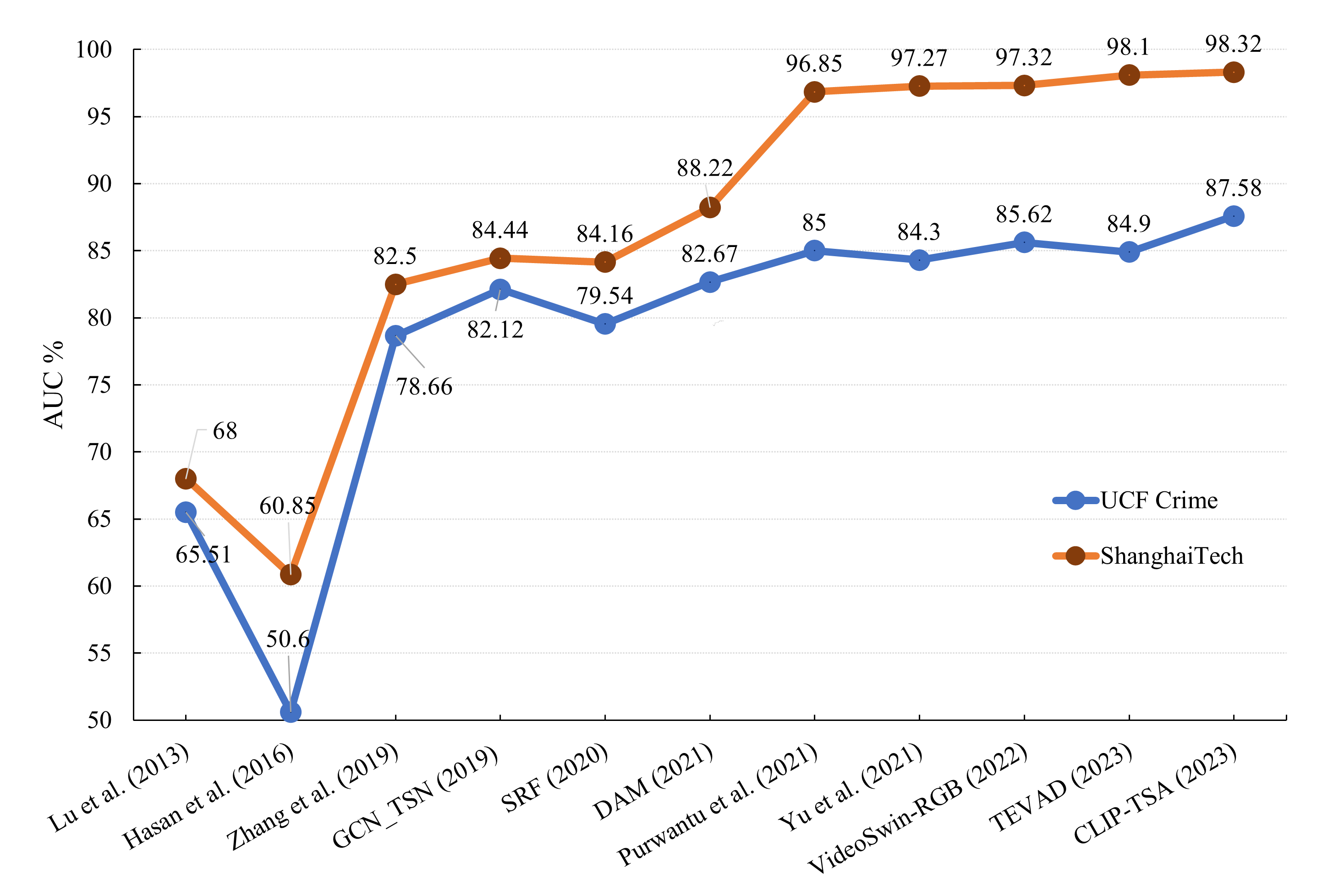Multimodal Attention-Enhanced Feature Fusion-based Weekly Supervised Anomaly Violence Detection

0
✨
Sign in to get full access
This summary was produced with help from an AI and may contain inaccuracies - check out the links to read the original source documents!
Related Papers
✨

0
New!Multimodal Attention-Enhanced Feature Fusion-based Weekly Supervised Anomaly Violence Detection
Yuta Kaneko, Abu Saleh Musa Miah, Najmul Hassan, Hyoun-Sup Lee, Si-Woong Jang, Jungpil Shin
Weakly supervised video anomaly detection (WS-VAD) is a crucial area in computer vision for developing intelligent surveillance systems. This system uses three feature streams: RGB video, optical flow, and audio signals, where each stream extracts complementary spatial and temporal features using an enhanced attention module to improve detection accuracy and robustness. In the first stream, we employed an attention-based, multi-stage feature enhancement approach to improve spatial and temporal features from the RGB video where the first stage consists of a ViT-based CLIP module, with top-k features concatenated in parallel with I3D and Temporal Contextual Aggregation (TCA) based rich spatiotemporal features. The second stage effectively captures temporal dependencies using the Uncertainty-Regulated Dual Memory Units (UR-DMU) model, which learns representations of normal and abnormal data simultaneously, and the third stage is employed to select the most relevant spatiotemporal features. The second stream extracted enhanced attention-based spatiotemporal features from the flow data modality-based feature by taking advantage of the integration of the deep learning and attention module. The audio stream captures auditory cues using an attention module integrated with the VGGish model, aiming to detect anomalies based on sound patterns. These streams enrich the model by incorporating motion and audio signals often indicative of abnormal events undetectable through visual analysis alone. The concatenation of the multimodal fusion leverages the strengths of each modality, resulting in a comprehensive feature set that significantly improves anomaly detection accuracy and robustness across three datasets. The extensive experiment and high performance with the three benchmark datasets proved the effectiveness of the proposed system over the existing state-of-the-art system.
Read more9/18/2024


0
Video Anomaly Detection in 10 Years: A Survey and Outlook
Moshira Abdalla, Sajid Javed, Muaz Al Radi, Anwaar Ulhaq, Naoufel Werghi
Video anomaly detection (VAD) holds immense importance across diverse domains such as surveillance, healthcare, and environmental monitoring. While numerous surveys focus on conventional VAD methods, they often lack depth in exploring specific approaches and emerging trends. This survey explores deep learning-based VAD, expanding beyond traditional supervised training paradigms to encompass emerging weakly supervised, self-supervised, and unsupervised approaches. A prominent feature of this review is the investigation of core challenges within the VAD paradigms including large-scale datasets, features extraction, learning methods, loss functions, regularization, and anomaly score prediction. Moreover, this review also investigates the vision language models (VLMs) as potent feature extractors for VAD. VLMs integrate visual data with textual descriptions or spoken language from videos, enabling a nuanced understanding of scenes crucial for anomaly detection. By addressing these challenges and proposing future research directions, this review aims to foster the development of robust and efficient VAD systems leveraging the capabilities of VLMs for enhanced anomaly detection in complex real-world scenarios. This comprehensive analysis seeks to bridge existing knowledge gaps, provide researchers with valuable insights, and contribute to shaping the future of VAD research.
Read more7/2/2024


0
Weakly Supervised Video Anomaly Detection and Localization with Spatio-Temporal Prompts
Peng Wu, Xuerong Zhou, Guansong Pang, Zhiwei Yang, Qingsen Yan, Peng Wang, Yanning Zhang
Current weakly supervised video anomaly detection (WSVAD) task aims to achieve frame-level anomalous event detection with only coarse video-level annotations available. Existing works typically involve extracting global features from full-resolution video frames and training frame-level classifiers to detect anomalies in the temporal dimension. However, most anomalous events tend to occur in localized spatial regions rather than the entire video frames, which implies existing frame-level feature based works may be misled by the dominant background information and lack the interpretation of the detected anomalies. To address this dilemma, this paper introduces a novel method called STPrompt that learns spatio-temporal prompt embeddings for weakly supervised video anomaly detection and localization (WSVADL) based on pre-trained vision-language models (VLMs). Our proposed method employs a two-stream network structure, with one stream focusing on the temporal dimension and the other primarily on the spatial dimension. By leveraging the learned knowledge from pre-trained VLMs and incorporating natural motion priors from raw videos, our model learns prompt embeddings that are aligned with spatio-temporal regions of videos (e.g., patches of individual frames) for identify specific local regions of anomalies, enabling accurate video anomaly detection while mitigating the influence of background information. Without relying on detailed spatio-temporal annotations or auxiliary object detection/tracking, our method achieves state-of-the-art performance on three public benchmarks for the WSVADL task.
Read more8/14/2024


0
Weakly-supervised anomaly detection for multimodal data distributions
Xu Tan, Junqi Chen, Sylwan Rahardja, Jiawei Yang, Susanto Rahardja
Weakly-supervised anomaly detection can outperform existing unsupervised methods with the assistance of a very small number of labeled anomalies, which attracts increasing attention from researchers. However, existing weakly-supervised anomaly detection methods are limited as these methods do not factor in the multimodel nature of the real-world data distribution. To mitigate this, we propose the Weakly-supervised Variational-mixture-model-based Anomaly Detector (WVAD). WVAD excels in multimodal datasets. It consists of two components: a deep variational mixture model, and an anomaly score estimator. The deep variational mixture model captures various features of the data from different clusters, then these features are delivered to the anomaly score estimator to assess the anomaly levels. Experimental results on three real-world datasets demonstrate WVAD's superiority.
Read more6/14/2024